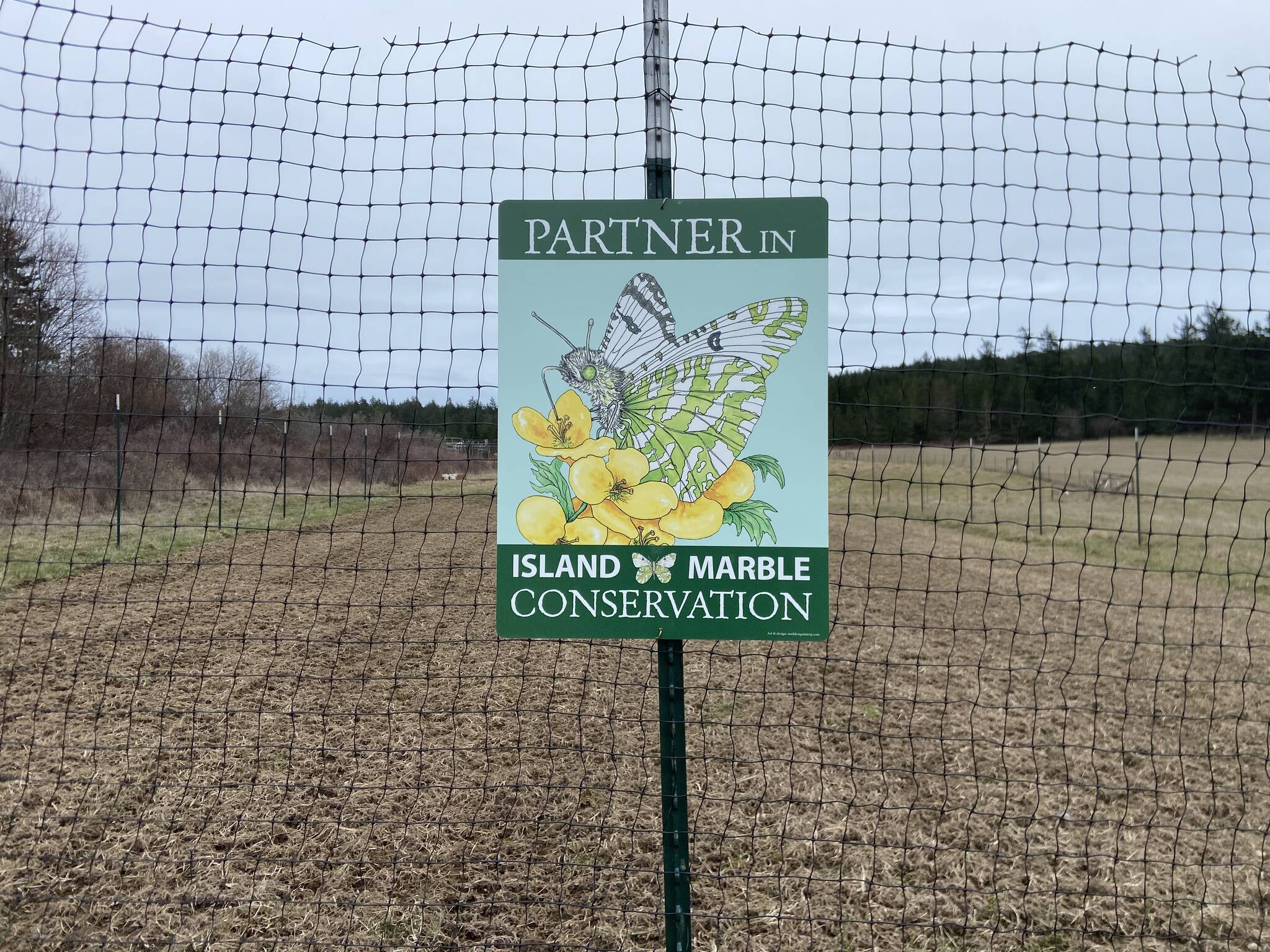Submitted by the Lopez Island School District.
The Lopez Island School District, in partnership with US Fish and Wildlife Service (USFWS) and the San Juan Islands Conservation District (SJICD), recently added 5,000 square feet of protected habitat for the highly endangered Island Marble Butterfly. The habitat plot was created as part of the USFWS’ Partners for Fish and Wildlife Program, which works with public and private landowners to effectively achieve voluntary habitat restoration through financial and technical assistance for the benefit of threatened and endangered species and their habitats.
Habitat plots are fenced to keep out deer and other unwanted intruders. They are planted with Brassica rapa—bright yellow flowering Field Mustard that is considered one of the few suitable host plants for the Island Marble. Blooming in the Spring, these plants create a yellow landing pad visible from the air for butterflies in flight. Brassica rapa provides the necessary resources and environment to support the butterfly throughout its entire life cycle—providing nectar, suitable conditions for egg-laying, and opportunities for caterpillar maturation.
The Island Marble was historically found throughout the San Juan and Gulf Islands. Thought to be extinct since 1908, the IMB was rediscovered on San Juan Island in 1998, after missing for nearly 90 years. A broad search for the butterfly by citizens and the Washington Department of Fish and Wildlife turned up additional populations on Lopez Island including a patch of Brassica rapa at the southern end of the school district campus near the new habitat plot. This population was last seen around 2010 when it is believed that the IMB was extirpated from Lopez altogether due to habitat loss. The butterfly was also known to occupy open habitat in the center of Lopez Island and the tombolo connecting Fisherman’s Bay Peninsula.
At this point, an estimated 200–500 Island Marble individuals are thought to be in existence, all of them in or around the southern end of San Juan Island, making this one of the rarest butterflies in the world. Land and resource managers hope to be able to bring the butterfly back to Lopez Island within the next five to ten years. The new habitat plot at the southern portion of the school campus is well-situated relative to other habitat plots being hosted by willing private landowners across the island.
In addition to the new LISD plot providing habitat for such a unique species, it presents the opportunity for rich learning opportunities for Lopez Island students and residents. 4th grade teacher Lorri Swanson currently teaches an experiential butterfly curriculum, some of which is specifically tailored to the Island Marble. “It is very powerful for our students to have an area on campus that is designated and will forever be preserved as a habitat for our endangered Island Marble. It’s thrilling that students have this incredible opportunity to experience firsthand efforts to protect an endangered species such as this,” said Swanson.
LISD Superinatendent Ed Murray commented that, “We are pleased that we have this opportunity to bring real-world conservation efforts to our campus as a means of both serving our students and the broader community. Our partnership with the USFWS and SJICD will provide unique experiences and opportunities for our students.”
To find out more about Island Marble Butterfly conservation in the islands, or if you are interested in adding habitat to your land, please visit the SJICD website at www.sanjuanislandscd.org or contact the Project Manager Walt Andrews at walt@sjicd.org. To learn more about USFWS’ Partners for Fish and Wildlife program that provides financial and technical support for landowners currently adding Island Marble habitat, please visit https://www.fws.gov/program/partners-fish-and-wildlife.



